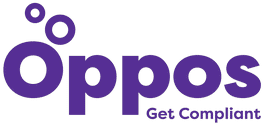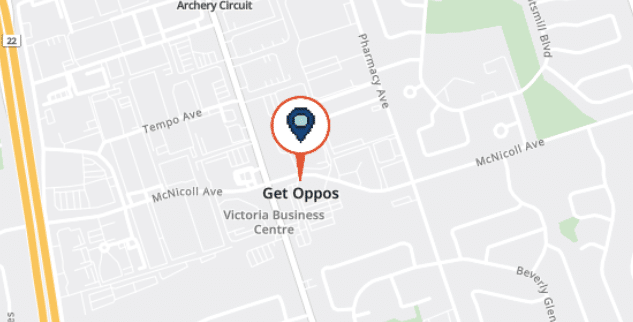Preparing for a SOC 1 audit can be a complex and time-consuming process, but it is a crucial step for organizations that handle sensitive customer data. A SOC 1 audit provides assurance to clients and stakeholders that your organization has effective controls in place to protect their data and ensure the integrity of your systems and processes.
To help you streamline your preparation efforts, we have compiled a quick checklist of key steps and considerations to remember as you embark on the SOC 1 audit process. By following this checklist, you can ensure your organization is well-prepared to meet the audit requirements and demonstrate your commitment to data security and compliance. Keep reading to learn more about how to prepare for a SOC 1 audit.

In this Guide
What are SOC 1 audits?
SOC 1 audits, also known as System and Organization Controls 1 audits, are independent examinations performed on an organization’s internal controls and processes. These audits are designed to evaluate the effectiveness and reliability of an organization’s financial reporting and internal control over financial reporting.
A SOC 1 audit aims to assure a company’s stakeholders, such as investors, customers, and business partners, that the organization has implemented adequate controls to ensure the accuracy and integrity of its financial reporting. It helps to instill trust and confidence in the organization’s financial statements and ensures that the company complies with industry regulations and standards.
SOC 1 audits follow the guidelines and criteria established by the American Institute of Certified Public Accountants (AICPA). The audit process thoroughly examines the organization’s control environment, risk assessment processes, control activities, information and communication systems, and monitoring activities.
The audit report issued after a SOC 1 audit assesses the effectiveness of the organization’s internal controls and highlights any deficiencies or areas for improvement. Management can use this report to identify and address weaknesses in their control environment and make necessary enhancements to their internal controls.
SOC 1 audits are particularly important for organizations that provide services that impact their clients’ financial statements, such as data processing, payroll processing, or financial transaction processing. By undergoing a SOC 1 audit, these service organizations can demonstrate their commitment to maintaining an effective control environment and assure their clients that their financial information is being handled securely and accurately.
Beginner’s Guide to SOC Compliance [Complete Guide]
How do I prepare for SOC 1 audit?
Preparing for a SOC 1 audit can be daunting, but with careful planning and attention to detail, you can ensure a successful outcome. A SOC 1 audit, also known as a Service Organization Control 1 audit, evaluates the effectiveness of an organization’s internal controls over financial reporting. It is an important step for companies that provide services to other companies, as it demonstrates a commitment to protecting their clients’ financial interests.
To prepare for a SOC 1 audit, familiarize yourself with the requirements outlined in the AICPA (American Institute of Certified Public Accountants) SOC 1 framework. This framework guides the controls that should be in place to mitigate risks related to financial reporting. Review the controls and assess whether your organization has implemented them effectively. Identify any gaps or weaknesses and create a plan to address them before the audit.
In addition to assessing the effectiveness of your controls, it is important to gather evidence to support your claims. This evidence can include documentation, policies and procedures, system access logs, and other relevant information. Organize and maintain these documents in a secure and easily accessible manner to facilitate the audit process.
Engaging relevant organizational stakeholders is another important aspect of preparing for a SOC 1 audit. This includes individuals from various departments such as finance, IT, human resources, and operations. These stakeholders should be involved in assessing controls, identifying gaps, and implementing improvements. Communication and collaboration among departments are key to ensuring a smooth and comprehensive audit.
Consider engaging a third-party audit firm that specializes in SOC 1 audits. These firms have expertise and experience in conducting audits and can provide valuable guidance throughout preparation. They can also conduct a readiness assessment to identify areas requiring additional attention before the official audit.
Lastly, ensure that you have a designated project manager or team responsible for overseeing the preparation and execution of the SOC 1 audit. This individual or team should be well-versed in the audit requirements and be able to coordinate efforts across departments. Establish a timeline and milestones to track progress and ensure all necessary tasks are completed on time.
Understanding the Key Differences between SOC 1, SOC 2, and SOC 3
SOC 1 Compliance Checklist
Here is a checklist of key areas to consider when striving for SOC 1 compliance:
1. Understand the Scope: Determine the specific systems, processes, and controls that are within the scope of SOC 1 compliance. Identify your organization’s services and the data or systems relevant to the compliance assessment.
2. Assess Risks: Conduct a thorough risk assessment to identify potential threats and vulnerabilities to the systems and processes within the scope of SOC 1 compliance. This includes evaluating the potential impact of disruptions or failures in these areas.
3. Establish Control Objectives: Define the control objectives that will be the foundation for SOC 1 compliance. These objectives should align with the AICPA’s Trust Services Criteria (TSC), which include security, availability, processing integrity, confidentiality, and privacy.
4. Design and Implement Controls: Develop and implement appropriate organizational controls to address the identified risks and control objectives. This may involve implementing security measures, establishing processes and procedures, and implementing employee training programs.
5. Conduct Testing: Regularly test the effectiveness of your implemented controls. This can be done through independent assessments, internal audits, or third-party audits. These tests should validate the design and operating effectiveness of the controls in place.
6. Document Policies and Procedures: Maintain comprehensive documentation that outlines your organization’s policies, procedures, and controls related to SOC 1 compliance. This documentation should be easily accessible and regularly reviewed and updated as needed.
7. Monitor and Report: Monitor your organization’s compliance with SOC 1 requirements. Implement processes to identify and address any control deficiencies or non-compliance issues promptly. Regularly produce reports to track compliance progress and share them with relevant stakeholders.
8. Engage with Auditors: Work closely with the auditors throughout the process if your organization undergoes a formal SOC 1 audit. Please provide them with the necessary documentation and access to systems and personnel to facilitate the audit.
Conclusion
Preparing for a SOC 1 audit requires careful planning and attention to detail. This checklist provided a quick overview of the key steps involved in the process. To ensure a successful audit, staying informed and up to date on current regulations and best practices is crucial.
For more in-depth guidance and assistance with your SOC 1 audit, we invite you to subscribe to our newsletter for regular tips and insights. Also, contact our team to schedule a consultation to discuss your specific needs and requirements.
SOC 1 Audit FAQs
You may required to get a SOC 1 report from stakeholders or clients but there is no external requirement to get a SOC 1 report.
Typically it takes between 1-3 months.
Some common challenges include a lack of stakeholder buy-in, significant control failure, poor scoping, and insufficient communication.
Yes, internal audits can help to identify gaps ahead of time but an external audit will still be required.
SOC 1 is not a required standard so you are not required to meet its compliance standards to operate your business.






